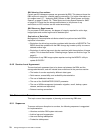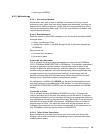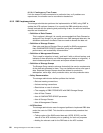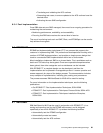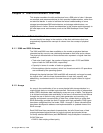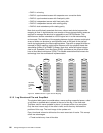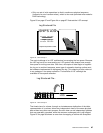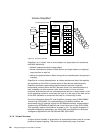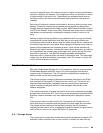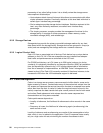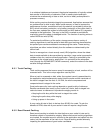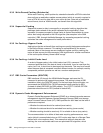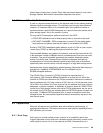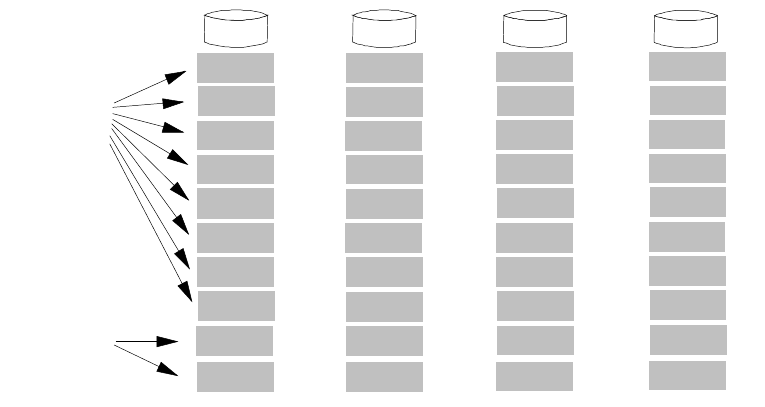
86 Storage Management with DB2 for OS/390
• RAID 1: mirroring
• RAID 2: synchronized access with separate error correction disks
• RAID 3: synchronized access with fixed parity disk
• RAID 4: independent access with fixed parity disk
• RAID 5: independent access with rotating parity
• RAID 6: dual redundancy with rotating parity
Note that we still closely associate the terms volume and device because the
mapping is fixed. A logical device now consists of those storage facility resources
required to manage the data that is accessible to an ESCON device. This
definition can also be extended to a SCSI logical unit in a disk data-sharing
environment. The definition of the mapping between logical volumes and physical
arrays of disks can be done by configuration tools at the level of the storage
server by implementing the fixed mapping tables. Figure 22 on page 86 shows an
example of RAID mapping: eight logical volumes onto four physical head disk
assemblies (HDAs) in a RAMAC 3 drawer. Note that, while the logical volume
view is still Extended Count Key Data (ECKD) architecture, the physical HDAs
have a fixed block architecture (FBA). This flexible association disconnects the
technology from the architectural implementation.
Figure 22. RAMAC3 Drawer Logical Volume Mapping
9.1.3 Log Structured File and SnapShot
The physical disk space is considered as a never-ending sequential space, called
alog. New or updated data is placed at the end of the log, in the free area.
Therefore, data is never updated in place; it is always written to a new place.
Only the most recent copy of the data is valid, and a directory indicates the
position of this copy. The track image is the update unit.
Every functional volume is defined as the most recent set of tracks. This concept
offers two advantages:
• Timed evolutionary view of the data
PARITY
PARITY
VOL 0
VOL 1
VOL 2
VOL 3
VOL 4
VOL 5
VOL 6
VOL 7
VOL 0
VOL 1
VOL 2
VOL 3
VOL 4
VOL 5
VOL 6
VOL 7
VOL 0
VOL 1
VOL 0
VOL 1
VOL 2
VOL 3
VOL 4
VOL 5
VOL 6
VOL 7
VOL 0
VOL 1
PARITY
PARITY
PARITY
PARITY
PARITY
PARITY
PARITY
PARITY
VOL 0
VOL 1
FIRST
LOGICAL
CYLINDER
OF
VOL X
SECOND
LOGICAL
CYLINDER
OF
VOL X
DISK1
DISK2 DISK3
DISK4



